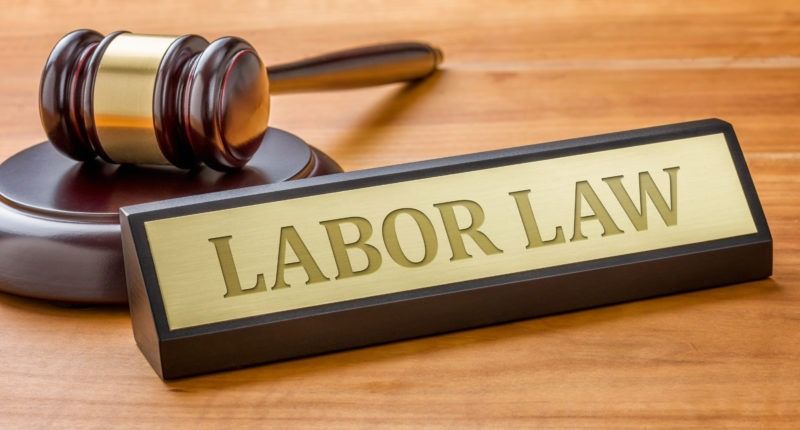Table of Contents
Introduction
The central purpose of labor law is seen as that of maintaining an equilibrium between employers and workers by ensuring the effective operation of a voluntary system of collective bargaining. Beyond that, labor law is seen as concerned with protecting the social rights of workers, but even that is in a sense subsidiary to the main aim.
Many of the developments in labor law in the last twenty or more years can usefully be seen as forming part of a number of strategies whose aim has been to meet the equilibrium between the workers and employees. There have been four main types of strategy, with a complex inter-relationship:
- Incomes policy;
- Social contract;
- Legal restrictions;
- Control by the market.
Also, it mediates many aspects of the relationship between trade unions, employers and employees. In other words, labor law defines the rights and obligations of workers, union members and employers in the workplace. Generally, labor law covers:
- Industrial relations – certification of unions, labor-management relations, collective bargaining and unfair labor practices;
- Workplace health and safety;
- Employment standards, including general holidays, annual leave, working hours, unfair dismissals, minimum wage, layoff procedures and severance pay.
Historical Development Of Labor Law
The late 1980s and 1990s was one period in which there was a high level of consensus regarding what was to be done, merging around strategies of market liberalization and privatization, involving the winding back of state legal and institutional regulation.
However, when the reforms that had been recommended were not successful in producing economic growth and material well-being, some thinkers and prominent development institutions concluded that the original prescriptions needed to be augmented with additional regulatory or institutional reforms.
The main focus has been on strengthening property rights and banking and securities regulation. However, labor laws have also come under increasing scrutiny: “If trade liberalization did not produce the expected results, it must be because labor markets were not sufficiently flexible or other institutions required adjustment.”
Deliberations & Reports undertaken by countries to establish effective Labor Laws Policies
Britain – “Whitley Commission” advocated for industrial councils to be set up throughout the world. A conference was held in February 1918 attended by the delegates of Britain, France, Belgium, and Italy which championed the cause for establishing an International labor rights body and easing the diplomatic procedure to benefit the labor.
America – “American Federation of Labor” published an apolitical report that advocated for strengthening the collective bargaining process and improving the lives of persons currently engaged in industries.
The ‘Washington Consensus-Plus’ agenda in some ways marked a major shift for policy makers who adhere to neoclassical economics. Instead of prescribing the rolling back the state, it effectively reinstates a role for the state and other institutions in regulating the market.
The World Bank’s annual ‘Doing Business Report’ stresses upon the issue of Ease of Doing Business. The report rates countries against a range of indices that measure the theoretical ‘ease’ of doing business under particular legal and institutional models, where ‘ease’ appears to be assessed according to estimated cost and other ‘burdens’ associated with compliance with legal and administrative rules and procedures across a range of policy areas.
Role Of international Labor Organization
International labor Organization (ILO) was one of the first organizations to deal with labor issues. The ILO was established as an agency of the League of Nations following the Treaty of Versailles, which ended World War I.
Post-war reconstruction and the protection of labor unions occupied the attention of many nations during and immediately after World War 1. Two viewpoints emerged to make amends for the future of labor laws:
Firstly, the International Federation of Trade Unions (IFTU), which called for a meeting in Berne in July 1919. The IFTU also proposed including delegates from the Central Powers as equals. Samuel Gompers, president of the AFL, boycotted the meeting, wanting the Central Powers delegates in a subservient role as an admission of guilt for their countries’ role in bringing about war. Instead, Gompers favored a meeting in Paris which would only consider President Woodrow Wilson’s Fourteen Points as a platform. Despite the American boycott, the Berne meeting went ahead as scheduled.
In its final report, the Berne Conference demanded an end to wage labor and the establishment of socialism. If these ends could not be immediately achieved, then an international body attached to the League of Nations should enact and enforce legislation to protect workers and trade unions.
Secondly, The British advocated for establishing an international parliament that would help in the implementation of labor laws in countries associated with the league of nations. Each nation would be represented by two of its delegates in the parliament. An office would be created to collect data on labor issues.
Some of the members from the American side were not convinced about the concept of labor office and recommended that the office should only be empowered to make recommendations and enforcement should be the forte of the league of nations. The British vehemently opposed this idea, but the American proposal was adopted. The American side made 10 proposals that were also accepted that are as follows:
- Labor should be treated as human beings and not commodities.
- The right to minimum wages should be protected.
- There should be no wage disparity between men and women.
- Equal pay for equal work.
- The right to form associations is inherent and should be protected.
- Child labor below the age of 14 should be abolished.
- An eight-hour workday or a 40-hour workweek should be the norm across the globe.
- Six-day working should be an established norm.
- Foreign workers to be treated on par with domestic workers.
- Conditions of factories should be made habitable and congenial work environments should be pushed.
Lastly, The commission issued its final report on 4 March 1919, and the Peace Conference adopted it without amendment on 11 April. The report became Part XIII of the Treaty of Versailles. The first annual conference (referred to as the International labor Conference, or ILC) began on 29th October 1919 in Washington DC and adopted the first six International labor Conventions, which dealt with various issues such as:
- Hours of work in industry,
- unemployment,
- maternity protection,
- night work for women,
- minimum age and night work for young persons in industry.
The prominent French socialist Albert Thomas became its first Director General. The ILO became a member of the United Nations System after the demise of the League in 1946.
Evolution Of labor Laws In India
The labor laws of independent India derive their origin, inspiration and strength partly from the views expressed by important nationalist leaders during the days of national freedom struggle, partly from the debates of the Constituent Assembly and partly from the provisions of the Constitution and the International Conventions and recommendations.
The relevance of the dignity of human labor and the need for protecting and safeguarding the interest of labor as human beings has been enshrined in Chapter-III (Articles 16, 19, 23 & 24) and Chapter IV (Articles 39, 41, 42, 43, 43A & 54) of the Constitution of India keeping in line with Fundamental Rights and Directive Principles of State Policy.
The earliest Indian statute to regulate the relationship between employer and his workmen was the Trade Dispute Act, 1929. Provisions were made in this Act for “Restraining the rights of strike and lock out but no machinery was provided to take care of disputed”.
Under the Constitution of India, labor is a subject in the concurrent list where both the Central and State Governments are competent to enact legislation.
The legislation can be categorized as follows:
- labor laws enacted by the Central Government, where the Central Government has the sole responsibility for enforcement.
- labor laws enacted by Central Government and enforced both by Central and State Governments.
- labor laws enacted by the Central Government and enforced by the State Governments.
- labor laws enacted and enforced by the various State Governments which apply to respective State’s.
New labor Policies In India
With the growth of the Indian economy and privatization there has been a direct impact on labor policies in India as well. The brainstorming on labor Codes were fast-tracked after GST, as One Nation One Tax, was made applicable in the country with consensus and with the strong will of the Hon’ble Prime Minister Modi Ji to take tough decisions for “Sabka Saath Sabka Vikas aur Sabka Vishwas”.
By taking forward this progressive thinking, the reforms in labor Laws were also sped up such as:
- For transparency and accountability, the usage of IT-enabled system for inspection has been made mandatory.
- The ceiling limit of gratuity has been increased from Rs 10 Lakhs to Rs 20 Lakhs on 29.03.2018.
- On 16.02.2017, Payment of Wages Act enabled payment of wages to employees by cheque or crediting it to their bank account.
- Maternity Benefit Amendment Act, 2017, which came into effect on 01.04.2017, increased the paid maternity leave from 12 weeks to 26 weeks.
- Prime Minister had started “Shramev Jayate” on 16th October, 2014 at that moment, while terming the workers as “Nation Builders”, he had said that the power of “Shramev Jayate” for growth of the country was equal to that of “Satyamev Jayate”
- Workers were given the benefit of portability through Universal Account Number (UAN) so as to enable them to withdraw their provident fund securely from anywhere.
- A labor Tribunal will institutionalize the vibrant mechanism for speedy disposal of cases, because delay in justice equals injustice.
- To ensure security for all workers, the Central Government has amalgamated 9 labor Laws into the Social Security Code in order to secure the right of workers for insurance, pension, gratuity, maternity benefit etc.
- Under the “One Nation – One Ration Card”, now an Inter-State Migrant Worker would get a ration facility in the State he is working and the remaining members of his family would be able to avail of the ration facility in the State where they reside.
- A Social Security fund to be created for 40 crore unorganized workers including the gig and platform workers. This would help in extending comprehensive Social security coverage.
Conclusion
In my opinion we need to come out of the mindset that industry and labor are always in conflict with each other. Since labor is a concurrent subject, the law gives flexibility to state governments to modify the codes further as per their unique situation and requirements. The government of India has been trying to bridge the gap by introducing new labor policies and amending the old laws. However, it still needs to work on the efficient functioning of these policies and ensure that the workers receive the benefits of such policies.



